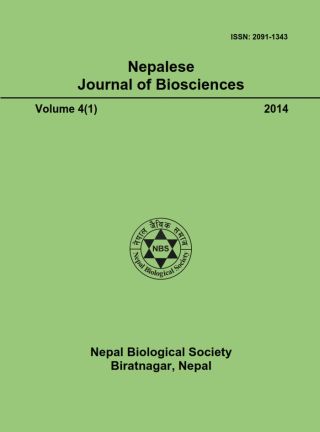Seasonal variations in biomass and nutrients in Eichhornia crassipes (Martius) Solms-Laubach at Biratnagar, Nepal
DOI:
https://doi.org/10.3126/njbs.v4i1.41709Keywords:
Water-hyacinth, IVI, biomass, diversity indices, productivity, nutrientsAbstract
In a derelict depression retaining water throughout the year, the importance value index of E. crassipes ranged between 23.06 (March) and 146.4 (January), whereas biomass was between 4.16 (March) and 1280.8 g/m2 (November). The net primary productivity of the plant along with associated species was 2058.79 g/m2/yr. On the annual basis, percentage concentration of different nutrients in different plant parts occurred in the order: (i) N: stem (1.69) > whole leaf (1.65) > root (1.56) > pseudolamina (1.08); (ii) P: root (1.33) > whole leaf and pseudolamina (0.5) > stem (0.49); and (iii) K: pseudolamina (2.42) > stem and whole leaf (2.03) > root (1.41). Habitat water had maximum values of total nitrogen (8.25 mg/l), nitrite (0.05 mg/l) and potassium (19.7 mg/l) in winter; pH (6.4), conductivity (586 ds/m), ammonia (1.16 mg/l) and nitrate (0.15 mg/l) in summer; and temperature (31.20 C), turbidity (95 NTU) and total dissolved solids (650 mg/l) in rainy season. The sediment (mud) of the habitat was silty-clay loam with annual averages of pH 5, nitrogen 0.25%, phosphorus 0.0014%, potassium 0.076%, organic carbon 3.95% and C/N ratio 16:1.




